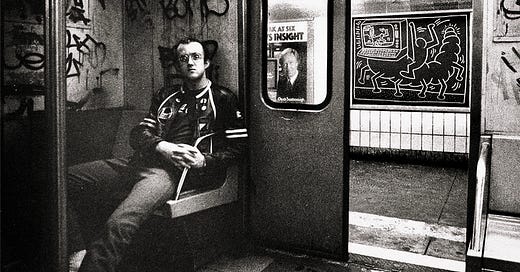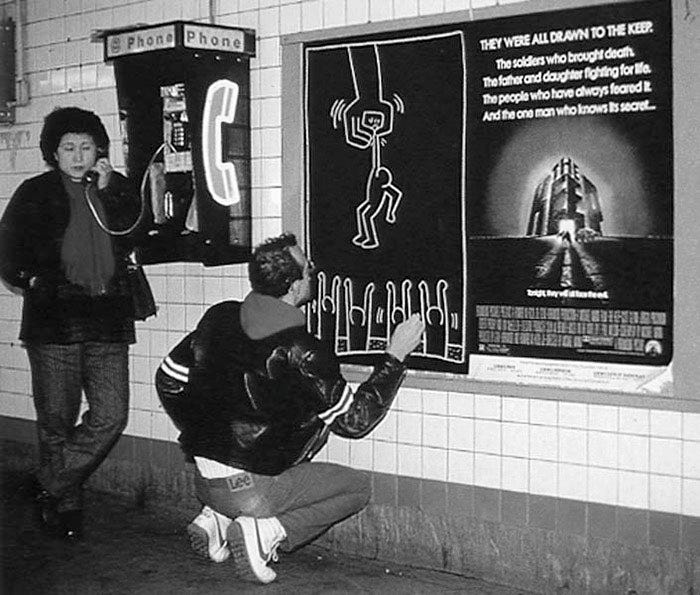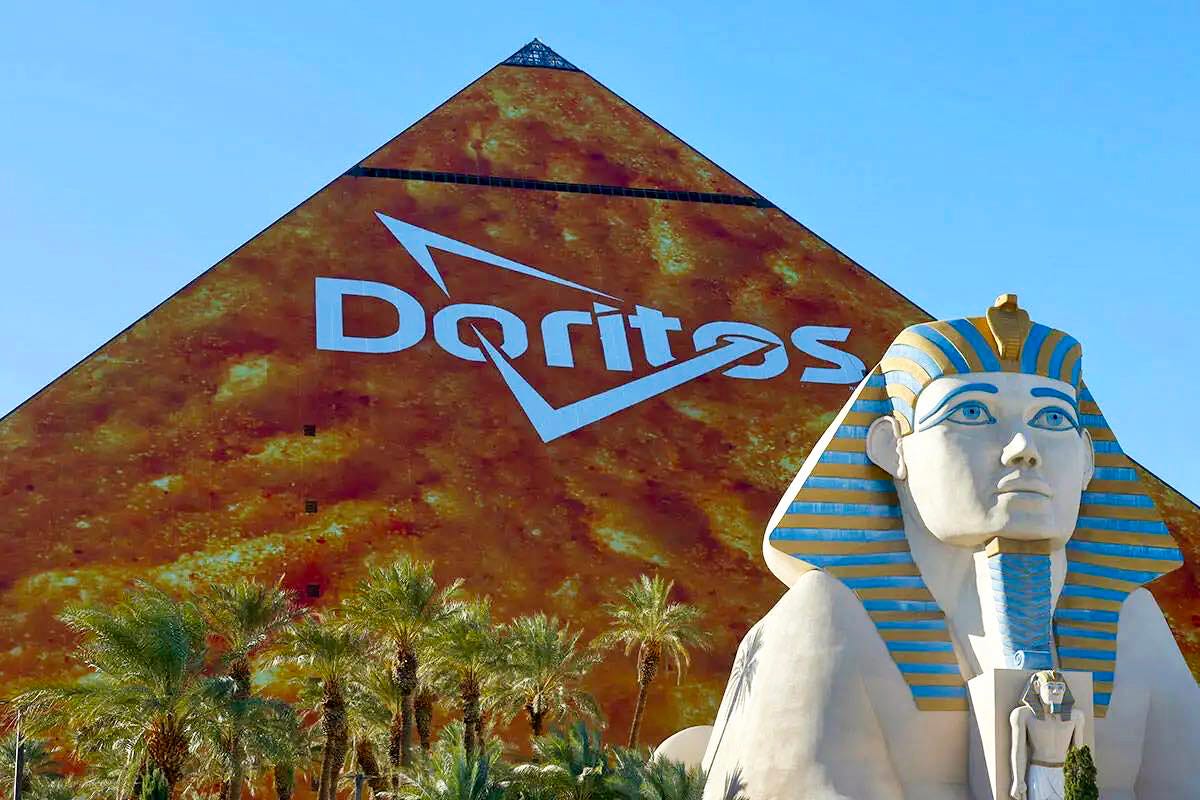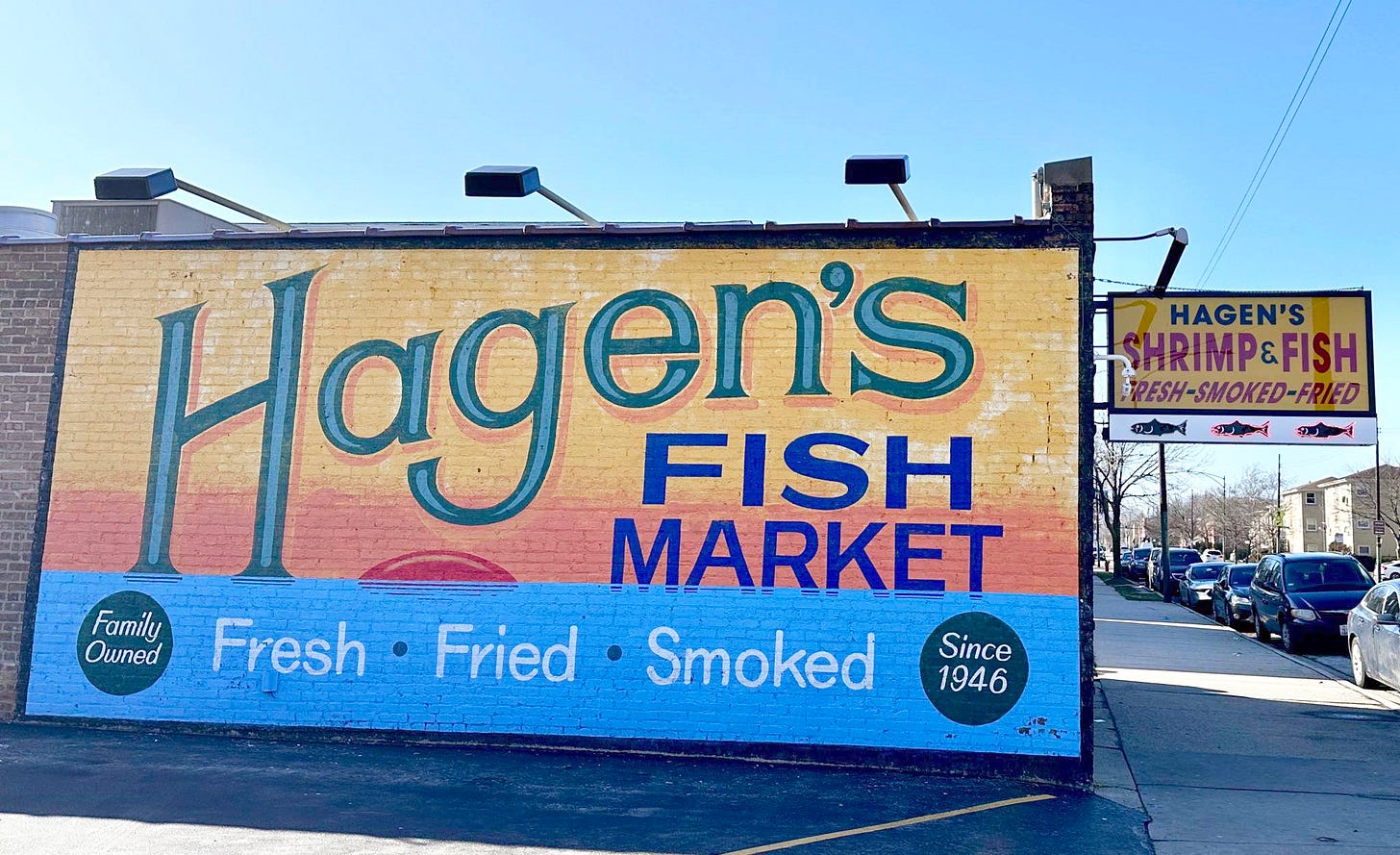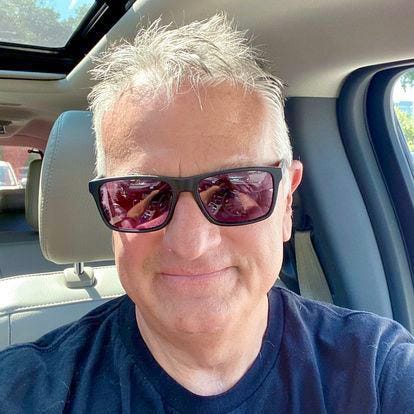Graffiti, art or ad? The legend of Keith Haring
by Nick Coston, OOH, DOOH, pDOOH Professional; Industry Writer
Earlier this week, “CBS Sunday Morning” beautifully dedicated most of the show to the recent passing of longtime anchor Charles Osgood. One popular segment that initially ran on Oct. 20, 1982, profiled a talented graffiti artist named Keith Haring. Osgood, the dogged storyteller, tagged along with Haring as he rammed his way through the New York City subway system, where his drawings showed up on the walls and advertising panels of hundreds of stations.
Between 1980 and ’85, Haring produced thousands of chalk drawings, mainly on the black matte sheets of paper pasted over empty ad panels that dotting the subway interiors. He drew over 5,000 chalk artworks in NYC subway stations alone, making him one of the largest transit advertisers during those five years.
As no sly deed goes unpunished, he was arrested numerous times for defacing public property. But the notoriety brought him more fame—and eyeballs.
It should be noted that Haring never paid a dime for all that space, either. By my count, based on a four-week media buy using $300 per panel in 1983 prices, Haring received the equivalent of around $1.5 million in free ad space. He could have been an astute OOH media buyer in addition to being a world-famous artist. Just sayin’.
Haring’s activism started while traveling the New York City subways, spotting all those blank advertising spaces covered with that inviting, easy-to-mark-up black paper. Sensing a huge opportunity (and blank canvases), he started drawing. And drawing. It became his daily addiction. Haring would ride station to station, look quickly for these empty black spaces, then pounce and draw quickly—with zero prep time—and hop on the next train. Stealth-like.
As Haring’s earlier subway graphics gave him plenty of practice time for his unique style, he found ways to merge pop art with politics into relatable social messages in a frantic environment No time for small talk. According to the Center for Public Art History, “He created numerous characters, such as the barking dog and the radiating baby, which he drew on flat planes with no spatial depth, often with only a horizon line or a staircase to suggest space.” Like New Yorker magazine cartoons, his art carried immediate impact, usually with multiple meanings.
Hint: OOH creative directors could use some of Haring’s simplistic expressions to push their products quicker, as he needed less dwell time to convey his message. Traditional OOH copy instructions repeatedly tell us to use 10 words or less to describe our advertising message. Haring used no words, yet his drawings were just as impactful as that paid Joe Camel ad off to the side.
And just like popular transit advertising had to endure, his popularity meant his work in the subways became so valuable that passengers began to steal the black panels as soon as he drew them, ending this phase of his hobby five years before he died in 1990 at age 31. He continually broke the law, and eventually, his fans and imitators followed suit. Haring went on to create art for all by merchandising posters and prints, finally turning his attention to larger-scale murals around the globe.
Before taking advantage of the NYC subway’s huge, available dark ad boards, he made his mark by altering street-level OOH wherever possible. One was for Chardón Jeans, where he blocked out letters so the ad read “hard on Jeans.” In the summer of 1980, Haring made more overtly political collages by cutting and rearranging headlines from the New York Post to say things like “REAGAN SLAIN BY HERO COP” and “POPE KILLED FOR FREED HOSTAGE.” He made copies of these works by the hundreds, slapping them citywide as he attempted to undermine the conservative political view of the day.
From subway platforms deep in the heart of Gotham to universal acceptance, Haring was a hero of an incredible subculture of street artists that were to follow. It hasn’t stopped, as the practice of street and subway art is still present. And let’s face it, all these clean, unobstructed pallets were primarily due to the rampant availability of unsold advertising space. And, of course, the lack of digital screens that wouldn’t come on the scene for another 30-plus years. Haring’s timing was perfect.
I call it “Artdoor.”
Oh, I Almost Forgot…
• The designated media hotel for the upcoming Super Bowl in Las Vegas is The Luxor, which they just dressed up like a ginormous Dorito chip. Doritos is the first Super Bowl sponsor to wrap a Vegas building. America’s fav corn chip is the perfect shape for this South Strip pyramid structure. Triangles-pyramids. Where’s the salsa-wrapped hotel? Vegas never disappoints.
• YouTubeTV is looking to go international. The NFL is looking to have franchises in Europe. Both are expected to happen. Football owns the ratings war on U.S. television, so OOH needs to keep a very keen eye on opportunities through these emerging developments.
• My favorite media rabble-rouser, Claude Taylor at Maddogpac.com, has yet another attention-getting, anti-Trump billboard going up shortly. This one is in Bullhead City, Arizona, titled “It’s a Cult.” Claude loves to run digital flips in particular markets for a while, then pushes photos on his social media platforms, mostly X, where he’s a regular. I ran a photo of his last digital placement on my LinkedIn page, where over 4,200 views were recorded, plus some spicy dialogue. Like him, hate him, Claude knows how to get eyeballs. He should. He’s been using OOH media to his advantage for years. Smart guy. We need more Claudes to boost our anemic political/advocacy numbers.
• Did you know that Hagen’s Fish Market on Chicago’s north side has been around since 1946? What better way to promote your location than a FREE wallscape on your site? It’s colorful, has working lights, reaches pedestrians and drivers as they pass by this easy-to-read copy, and is ground level. Since it’s Chicago, they specialize in deep-fried seafood, chicken, and some killer sides. The wallscape and menu are, in my book, spectacular. Billboards and deep-fried fish: That’s a lethal combo.
Nick Coston has been in the advertising industry for over 35 years. He’s worked at newspapers, magazines, OOH/DOOH companies, programmatic platforms, and ground-breaking ad tech companies, including Washingtonian, Washington Times, New Republic, USA Today Weekend, Clear Channel Outdoor, The Neuron, and Hypercell. Currently SVP media sales/strategy at Smartify Media, Nick also spent 10 years buying OOH for a top 10 national advertiser. He resides with his family in Dayton, Maryland, and has been musing about the Outdoor Media industry for over five years.

